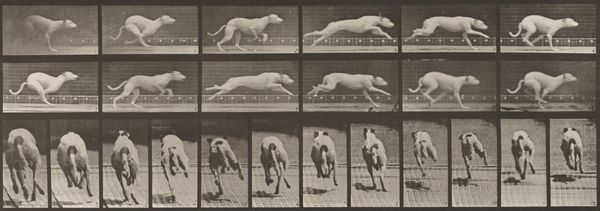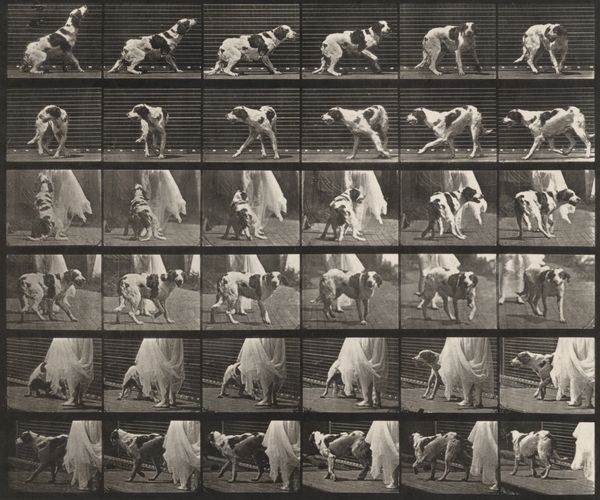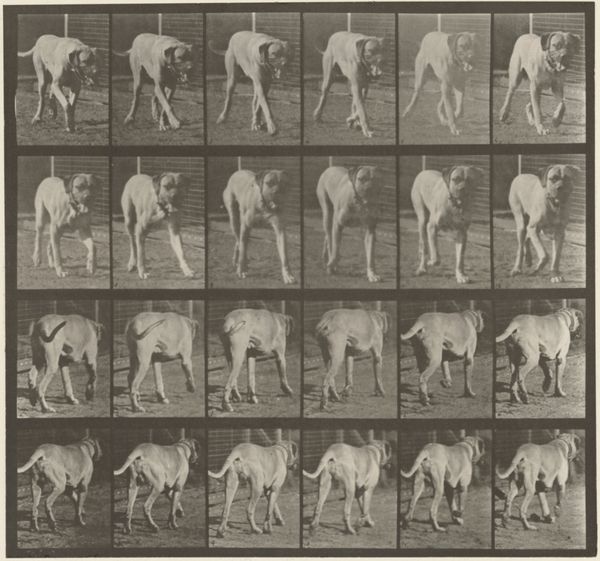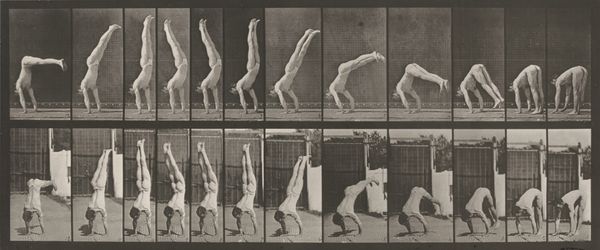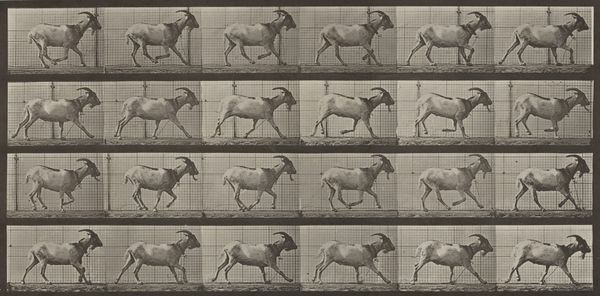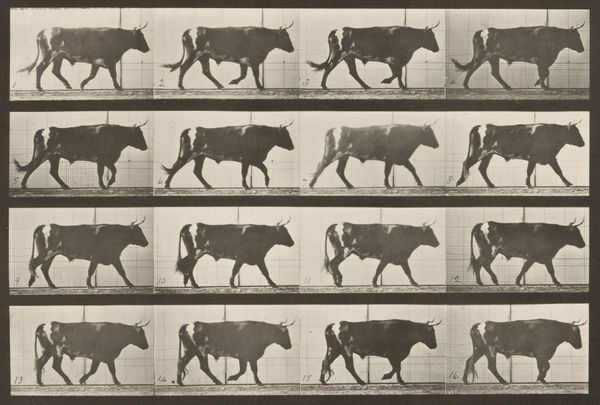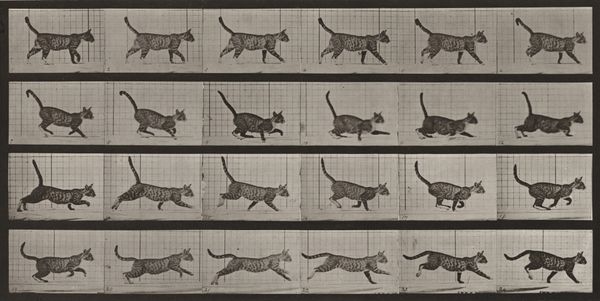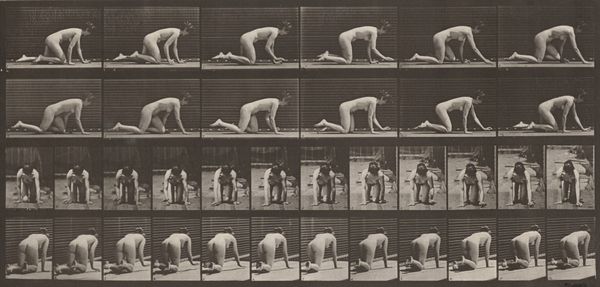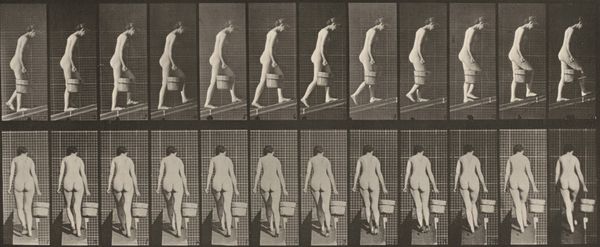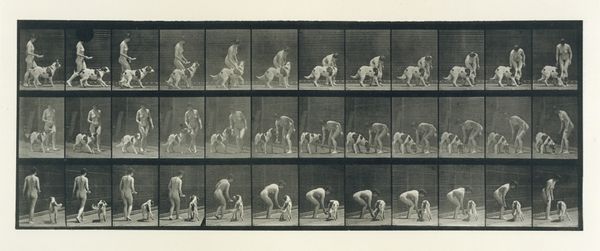
print, photography, gelatin-silver-print
#
kinetic-art
#
narrative-art
#
animal
# print
#
impressionism
#
figuration
#
photography
#
gelatin-silver-print
Dimensions: image: 13.1 × 46.2 cm (5 3/16 × 18 3/16 in.) sheet: 46.1 × 60.8 cm (18 1/8 × 23 15/16 in.)
Copyright: National Gallery of Art: CC0 1.0
Curator: It's almost cinematic, isn’t it? We're looking at Eadweard Muybridge's "Plate Number 706. Dog; trotting; mastiff, Smith" from 1887, a gelatin silver print. The sequence captures a dog in motion, broken down into individual frames. It’s scientific, artistic, and a little bit magical all at once. Editor: Magical is right! My first thought was how segmented the movement seems; almost robotic but charmingly so. Each pose, so isolated, almost reminds you of very, very early animation. It's captivating and somewhat melancholic—isolating a moment over and over. Curator: Exactly. Muybridge was obsessed with capturing movement, aiming to scientifically analyze it. He used a series of cameras triggered sequentially to freeze moments in time, helping to understand locomotion like never before. This piece particularly underscores the process; it is clearly broken into a photographic assembly line. It reminds you that these studies changed our ways to analyze movement within manufacturing as well. Editor: That's fascinating because it really changes my reading of the "animal" in the study. We're not really considering a specific being as such but movement; a machine making movement possible. What do you feel we lose though when the photographic process makes art seem so readily reproducible in contrast to painting or sculpting? Curator: I think it democratizes the ability to question reality. Seeing these separate frames forces us to reconsider what we think we know about how a dog moves. We take it for granted, but Muybridge shows us the specific mechanics that go into such a simple action. Its beauty and charm rest precisely there! Editor: And the grid in the background—that almost utilitarian addition drives this forward by offering it to our mind as an exercise rather than, say, a poetic reflection of the dog in transit. One begins to see the role technology and industrial processes took when thinking about representing bodies in the late 19th century! Curator: I couldn't agree more. He really pushes the possibilities that photography and labor can achieve. It reveals that our understanding of bodies isn't naturally so, but one that rests on a complex interaction between different frames. Editor: Well, looking at this image I feel that the conversation that started with scientific aspiration then becomes an intimate dialogue about what art and technology mean. Curator: Beautifully said, bringing us to new frameworks and a lovely place to pause for now.
Comments
No comments
Be the first to comment and join the conversation on the ultimate creative platform.


